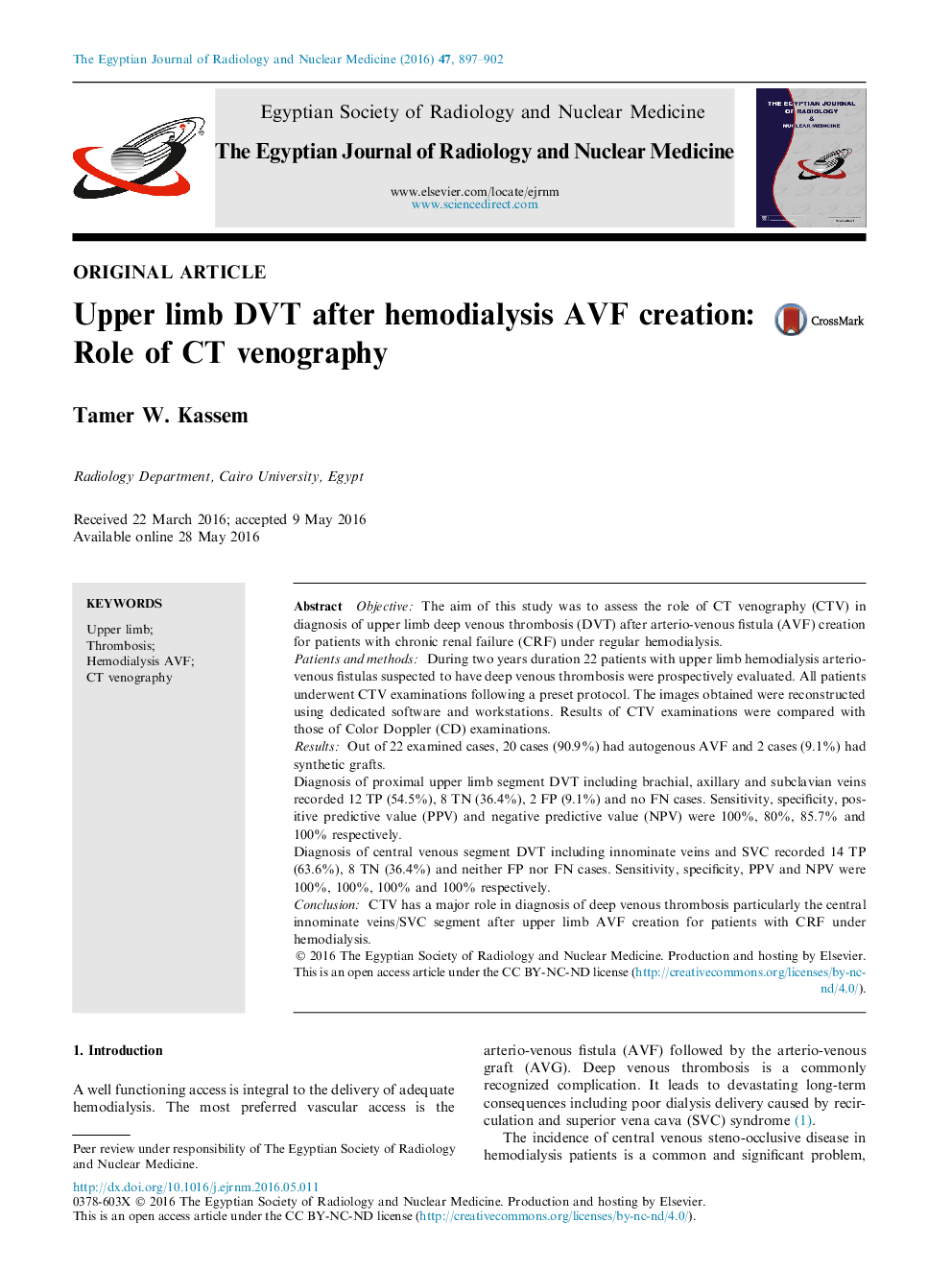| Article ID | Journal | Published Year | Pages | File Type |
|---|---|---|---|---|
| 4224007 | The Egyptian Journal of Radiology and Nuclear Medicine | 2016 | 6 Pages |
ObjectiveThe aim of this study was to assess the role of CT venography (CTV) in diagnosis of upper limb deep venous thrombosis (DVT) after arterio-venous fistula (AVF) creation for patients with chronic renal failure (CRF) under regular hemodialysis.Patients and methodsDuring two years duration 22 patients with upper limb hemodialysis arterio-venous fistulas suspected to have deep venous thrombosis were prospectively evaluated. All patients underwent CTV examinations following a preset protocol. The images obtained were reconstructed using dedicated software and workstations. Results of CTV examinations were compared with those of Color Doppler (CD) examinations.ResultsOut of 22 examined cases, 20 cases (90.9%) had autogenous AVF and 2 cases (9.1%) had synthetic grafts.Diagnosis of proximal upper limb segment DVT including brachial, axillary and subclavian veins recorded 12 TP (54.5%), 8 TN (36.4%), 2 FP (9.1%) and no FN cases. Sensitivity, specificity, positive predictive value (PPV) and negative predictive value (NPV) were 100%, 80%, 85.7% and 100% respectively.Diagnosis of central venous segment DVT including innominate veins and SVC recorded 14 TP (63.6%), 8 TN (36.4%) and neither FP nor FN cases. Sensitivity, specificity, PPV and NPV were 100%, 100%, 100% and 100% respectively.ConclusionCTV has a major role in diagnosis of deep venous thrombosis particularly the central innominate veins/SVC segment after upper limb AVF creation for patients with CRF under hemodialysis.
